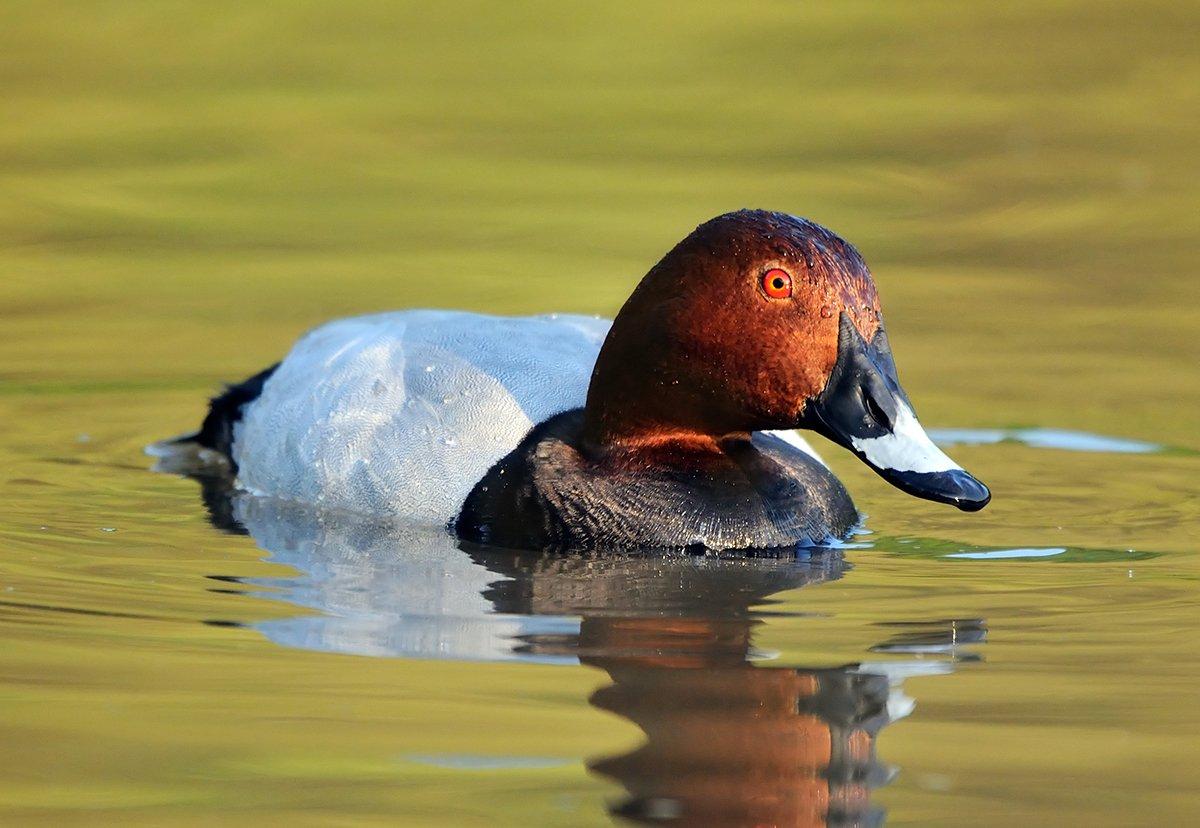These swift-flying divers get under your skin ... sometimes for life
Youth was so simple, at least for duck hunting.
In the farm country where I grew up, you might expect to encounter mallards, wood ducks and blue-winged teal. Occasionally, a greenwing or wigeon might sneak in, and if you were lucky, you'd get a crack at a goose once a year. Rumors of swift-flying, deep-diving, strangely colored lake ducks were the stuff of encyclopedias, and I never heard the term pochard until I was in my 20s. I'd encountered quite a few canvasbacks on the Mississippi River, but they were protected then, so even those big ducks were more of a novelty than the object of obsession.
Everything changed when I went to college and ventured onto big water. My first pochard in hand was a drake ringbill, which I took when it flushed after landing in the dozen decoys my dad and I had set out. I'd never seen one before, so Dad had to tell me what it was. Later that year, a friend invited me to his shoreline blind, where I missed multiple bluebills and finally ground-swatted my first. Holding that little hen, I marveled at its odd markings, big feet and aerodynamic body.
It went downhill from there. In the 32 years since that season, I've been a confirmed pochard nut, chasing them on sloughs, along lakeshores or even in open water, often at the expense of more popular or glamorous puddle ducks.
Pochard, of course is a loose term that describes the Aythya genus of diving ducks. The genus has many recognized species, including several North American members: canvasbacks, redheads, ringnecks, greater scaup and lesser scaup. These birds differ somewhat in size but have fairly similar body shapes and share a defining trait: the capacity for swift, agile flight — the kind that stymies yet delights wing-shooters.
Scaup — mostly lessers, or bluebills, but some greaters — have dominated my pochard quests simply because they're the bread-and-butter migrant duck on big waters near my home. But redheads, ringbills and cans usually figure into the campaign, too, whether during open-water forays or trips to the diver rich Dakota prairies.
To me, the appeal is simple. As mentioned, pochards make for consistently challenging wing-shooting, and when you perform well enough to fill a strap with any mix of 'bills, cans, redheads and ringbills, it's been a great day. Moreover, they typically decoy well, often descending like rockets from high altitude and then firing up the afterburners on their way out. To a decoy nut like me, seeing a flock of birds finish to your spread is the pinnacle of the game. And although their plumage might not match that of a spring puddler, drake pochards are stunning, especially when the red, black or white of a fully colored bull shines in the sun.
I even took my obsession across the ocean years ago. My wife and I had just arrived in London after a four-day tour of Paris and decided to take a walk in the famous Hyde Park. Amid the green grass and brilliant blooms of horse-chestnut flowers, something caught my eye. A bird swam down a small channel near a stone bridge, and I swore it was a redhead. No, maybe it was a canvasback.
Actually, it was a common pochard, a Eurasian duck that looks almost like a cross between a can and redhead. And there were several flocks of them huddled on the grassy banks of the park's lagoons. In fact, there was a tufted duck (another Eurasian pochard that looks similar to a ringneck but with a tuft drooping from the back of its head) in with them. I had found international pochard heaven.
I pointed at the ducks and frantically told my wife what they were. Not seeming to share my excitement, she waited patiently while I snapped a few pictures of the birds before we moved on. Nowadays, she maintains polite silence when I discuss the highlights of my London trip: Buckingham Palace, Westminster Abbey, the London Tower Bridge and common pochards in Hyde Park. Hey, at least it was spring, and I couldn't even scheme about hunting.
After I returned statewide, my domestic pochard obsession resumed, and I doubt it will ever wane. Hey, I treasure puddle ducks of all shapes and sizes and love when non-pochards such as goldeneyes and buffleheads (genus Bucephala) visit my lake-duck setups. But for me, the twisting, turning, rocket-like flight of pochards makes my season.
Most pochards are gone from my neck of the woods now, of course; probably lounging in some warm bay down South. They'll return for a bit in March and April but most (save locally nesting redheads) will have vacated the area by May, returning to their nesting grounds. Every October, however, a few will start trickling down the flyway, and little dots will appear on the lake. Immediately, the skiff will be stowed, and the big boat will block my driveway, with gang-rigs of bluebill and can decoys lining the decks.
It will be pochard time again, and the madness will continue — hopefully for years.
Click here for more Realtree waterfowl hunting content. And check us out on Facebook.







